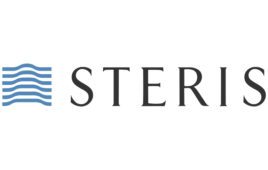
Ethylene oxide
Two companies that use ethylene oxide (EtO) to sterilize medical devices failed to report emissions of the toxic gas to the U.S. Environmental Protection Agency, according to a report by the Chicago Tribune.
Medline Industries and Sterigenics, both headquartered in Illinois, have also operated medtech sterilization operations in the state. Medline continues to do so, and Sterigenics decided in September 2019 not to reopen its EtO plant in Willowbrook, Ill., following a state-ordered closure in February of that year.
The EPA deemed the colorless, odorless gas a human carcinogen in 2016. It is used to sterilize millions of medical devices annually and is the subject of numerous lawsuits by people living or working near medtech sterilization plants. The Biden administration recently announced that it will propose new regulations for medical device sterilizers’ emissions of EtO in 2022.
Medline and Sterigenics separately told Medical Design & Outsourcing that they are not required to report emissions to the EPA’s Toxics Release Inventory (TRI), the database that the Tribune reviewed.
“The company reports emissions to relevant state authorities in accordance with the requirements under its permits,” a Sterigenics spokesperson told MDO in an email.
“Medline meets all US EPA and Illinois EPA reporting requirements and emission data associated with our Waukegan facility is disclosed to the public by US EPA,” Medline spokesperson Jesse Greenberg said in an email. “While we have not previously been required to file a Toxic Release Inventory (TRI) report, we are supportive of the US EPA’s new requirement to include all EtO sterilization facilities in the TRI reporting requirements.”
Medline regularly reports emissions data to the Illinois EPA, Greenberg added. The company maintains that its recently upgraded EtO emissions controls can capture “more than 99 percent of all EtO used at our facility and that we are below our annual emissions cap, which in Illinois are the strongest regulations in the country,” Greenberg added.
“Medline’s top priority has been and will continue to be the safety of our employees and our communities. We always have operated safely, transparently and within the requirements of our federal and state regulators, and we share the mission to protect human health and the environment,” he said. “Medline will always follow all federal and state rules and regulations and continue to operate safely and within our legal responsibilities.”
Fifty percent or more of the people living in the same neighborhood as 14 of 22 U.S. ethylene oxide-emitting facilities contributing to cancer risks of at least 100 in 1 million are minorities or part of low-income households, according to the EPA’s environmental justice screening tool, EJSCREEN. Residents of three more neighborhoods with EtO-related facilities have an elevated cancer risk of 1,000 in 1 million or greater, the agency added. Medical device sterilizers make up 11 of these facilities, while the rest are industrial EtO sites.
EtO is used to sterilize about 50% of all devices sold in the U.S. that require sterilization — more than 20 billion medical devices per year, according to the FDA. It is a preferred sterilant for devices made from certain polymers (such as plastic or resin), metals, or glass, and devices that have multiple layers of packaging or hard-to-reach crevices because it has better penetration properties than other methods and is unlikely to damage products during the process.


